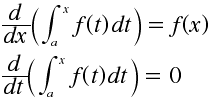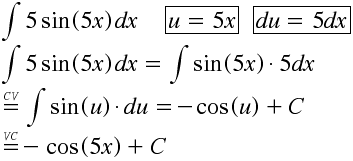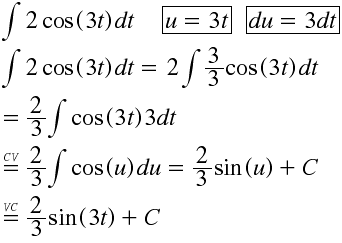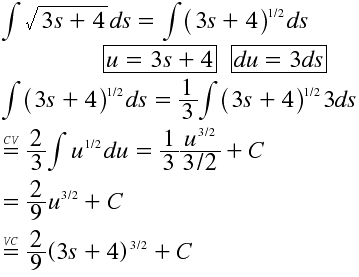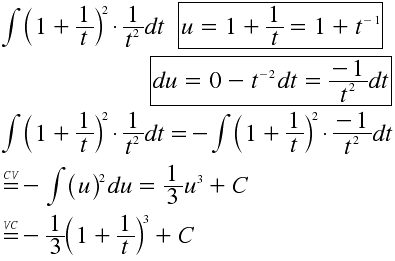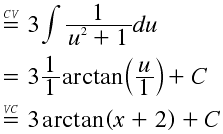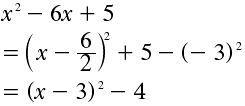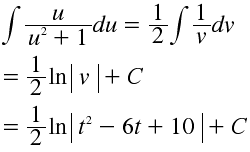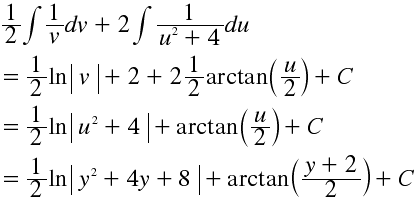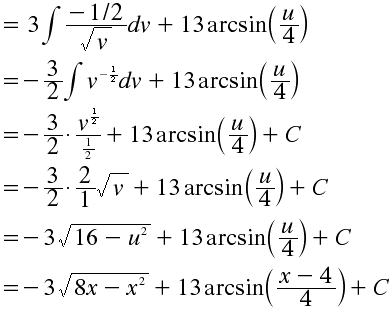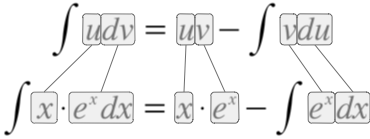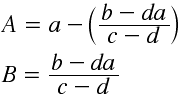Table des matières
Calcul intégral
Utilisation de la table d'intégrales
Théorème fondamental du calcul
<html>
</html>Si <m>f</m> est une fonction continue dans une intervale <m>I</m> qui contient <m>a</m>, et si
c'est-à-dire que <m>g</m> est une primitive.<html>
</html>
Exemples
Prenons par exemple :
Nommons :
Donc, <m>sin(x)</m> est une primitive de <m>cos(x)</m>.
Prenons maintenant :
Voici quelques exemples de fonctions qui ne présentent pas de primitives simples :
Techniques d'intégration
Changement de variable
Définition :
- Soit <html><img style=“vertical-align:middle;” src=“/wiki/lib/exe/fetch.php/math:calcul_integral:022.gif” alt=“” /></html>.
- Soit <html><img style=“vertical-align:middle;” src=“/wiki/lib/exe/fetch.php/math:calcul_integral:deltax.gif” alt=“” /></html> une variation de <html><img style=“vertical-align:middle;” src=“/wiki/lib/exe/fetch.php/math:calcul_integral:x.gif” alt=“” /></html>.
Alors, <html><img style=“vertical-align:middle;” src=“/wiki/lib/exe/fetch.php/math:calcul_integral:dx_deltax.gif” alt=“” /></html>, <html><img style=“vertical-align:middle;” src=“/wiki/lib/exe/fetch.php/math:calcul_integral:dx.gif” alt=“” /></html> est appelée la différentielle de <html><img style=“vertical-align:middle;” src=“/wiki/lib/exe/fetch.php/math:calcul_integral:x.gif” alt=“” /></html>. De même, <html><img style=“vertical-align:middle;” src=“/wiki/lib/exe/fetch.php/math:calcul_integral:dy.gif” alt=“” /></html> : différentielle de <html><img style=“vertical-align:middle;” src=“/wiki/lib/exe/fetch.php/math:calcul_integral:y.gif” alt=“” /></html> → <html><img style=“vertical-align:middle;” src=“/wiki/lib/exe/fetch.php/math:calcul_integral:dy_fxdx.gif” alt=“” /></html>. 
Si <html><img style=“vertical-align:middle;” src=“/wiki/lib/exe/fetch.php/math:calcul_integral:deltax-_0.gif” alt=“” /></html>, alors <html><img style=“vertical-align:middle;” src=“/wiki/lib/exe/fetch.php/math:calcul_integral:dy-deltay.gif” alt=“” /></html>
Exemple
- Si <html><img style=“vertical-align:middle;” src=“/wiki/lib/exe/fetch.php/math:calcul_integral:y_e2x.gif” alt=“” /></html>, alors <html><img style=“vertical-align:middle;” src=“/wiki/lib/exe/fetch.php/math:calcul_integral:dy_e2x_2dx.gif” alt=“” /></html>
- Si <html><img style=“vertical-align:middle;” src=“/wiki/lib/exe/fetch.php/math:calcul_integral:u_sin4x.gif” alt=“” /></html>, alors <html><img style=“vertical-align:middle;” src=“/wiki/lib/exe/fetch.php/math:calcul_integral:du_cos4x4dx.gif” alt=“” /></html>
- Si <html><img style=“vertical-align:middle;” src=“/wiki/lib/exe/fetch.php/math:calcul_integral:du_cos4x4dx.gif” alt=“” /></html>, alors <html><img style=“vertical-align:middle;” src=“/wiki/lib/exe/fetch.php/math:calcul_integral:du_1tdt.gif” alt=“” /></html>
Si <m>u=e^{2x}</m>, alors <m>du=2e^{2x}dx</m>.
On va montrer que <html><img style=“vertical-align:middle;” src=“/wiki/lib/exe/fetch.php/math:calcul_integral:026.gif” alt=“” /></html> :
En effet, <m>1/2e^{4x}</m> est une primitive de <m>2e^{4x}</m>.
Exemples
Les CV sur les signes d'égalité signifient qu'on applique un changement de variable, et les VC signifie qu'on replace les variables.
Changement de variable avec complétion de carré
<html>
</html>
Intégration par substitution
Intégration par parties
<html>
</html>












